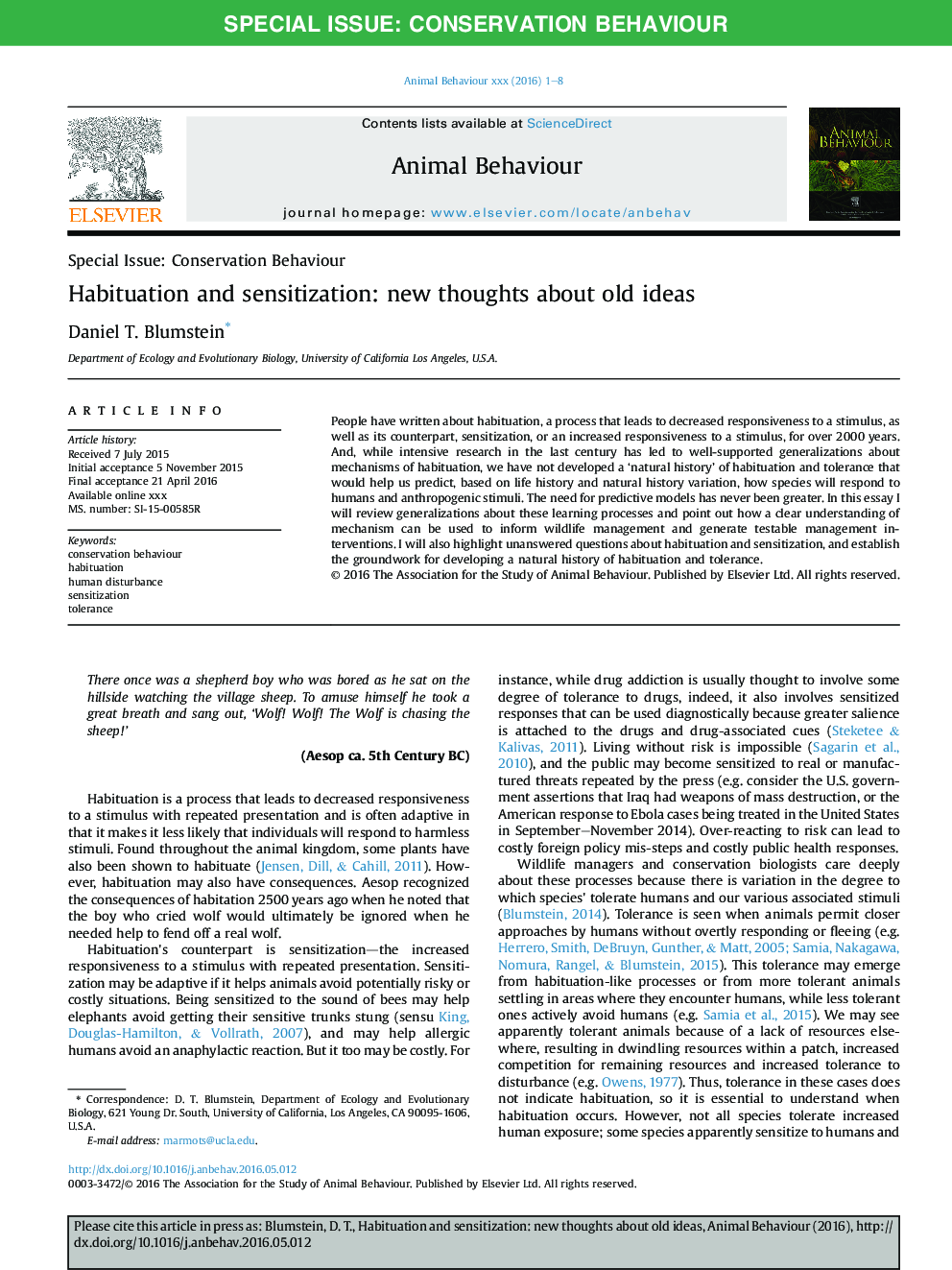| Article ID | Journal | Published Year | Pages | File Type |
|---|---|---|---|---|
| 8488935 | Animal Behaviour | 2016 | 8 Pages |
Abstract
People have written about habituation, a process that leads to decreased responsiveness to a stimulus, as well as its counterpart, sensitization, or an increased responsiveness to a stimulus, for over 2000 years. And, while intensive research in the last century has led to well-supported generalizations about mechanisms of habituation, we have not developed a 'natural history' of habituation and tolerance that would help us predict, based on life history and natural history variation, how species will respond to humans and anthropogenic stimuli. The need for predictive models has never been greater. In this essay I will review generalizations about these learning processes and point out how a clear understanding of mechanism can be used to inform wildlife management and generate testable management interventions. I will also highlight unanswered questions about habituation and sensitization, and establish the groundwork for developing a natural history of habituation and tolerance.
Related Topics
Life Sciences
Agricultural and Biological Sciences
Animal Science and Zoology
Authors
Daniel T. Blumstein,
